What Is Kratom Stem and Vein? – Kratomleaf.us
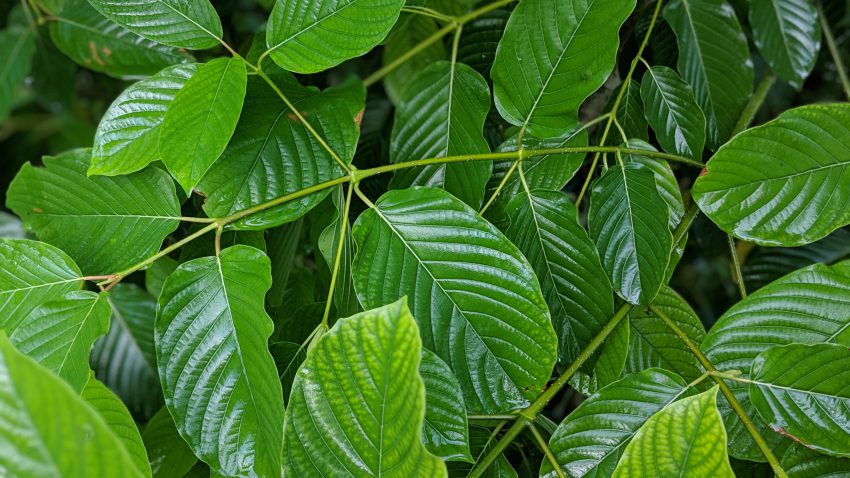
What Is Kratom Stem and Vein?
What Is Kratom Stem and Vein? – As you know the stems and veins are part of the kratom leaf. They are typically removed during the harvesting process. However, there is wellness support within these parts of the leaves. This would be kratom that is composed of the main stem and vein material. Since it is very hard to rid the fatty tissue from the stem and veins you will notice that your mixture will contain some other parts as well. So, when kratom farmers are disassembling the leaves they will separate the stem and vein material to be sold separately. The leaves are harvested, left to dry, and then farmers will carefully destem and devein the leaves before they are crushed into a powder. The raw parts of the kratom leaves, also known as kratom vein and stem, will be packaged and sold as-is.
They contain a wealth of alkaloids that live within the kratom plant. Since these parts of the kratom plant do have value, farmers have started packaging them and selling them as a byproduct of kratom. However, it is important to note that there is a lack of scientific studies when it comes to the kratom industry. The value of the stem and veins has never really been researched and only anecdotal advice is available on these products. When conducting your own research, you will find that some kratom users say this byproduct contains weaker amounts of the alkaloids that live within the leaf. Others say they contain higher amounts. However, there is no concrete evidence to support either claim. Regardless of research, there is some value within the kratom stem and veins. They contain very unique characteristics that some kratom users are seeking.
Why Would You Want To Use Stem and Vein Kratom?
Most kratom users will opt for kratom powders and capsules. Stem and vein kratom is a product that stands out on its own. This type of kratom has a variety of uses that appeal to some kratom users. One notable use of stem and vein kratom is to combine it with powder. This provides the user with a very diverse product packed with a large range of alkaloids. It will also provide a very aromatic essence.
One thing that really appeals to kratom users is the pricing of stem and vein kratom. This form of kratom will be priced even cheaper than powder. This means that potentially they could purchase stem and vein kratom and grind it up themselves. This type of kratom does appeal to those who are looking for a budget-friendly solution.
Kratom Leaf vs. Stem and Vein
The powder is very different from stem and vein products. For those who are seeking kratom for a robust alkaloid profile, you will probably want to stick to kratom powder. While stem and vein kratom does contain some alkaloids, it will never provide the same type of support that kratom powder does. However, there are instances when a customer may prefer to use stem and vein kratom over powder. Here are just a few examples where this may be the case.
WEERACHAI P.
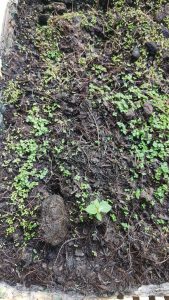
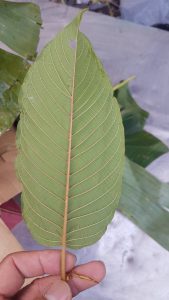

KRATOM MYTHS
KRATOM MYTHS
There are many misconceptions surrounding mitragyna speciosa. This mostly seems to be due to assumptions or deceiving vendors trying to keep sales high. These myths were then taken by others and spread like wild fire! Some so ingrained in the kratom community even good intentioned sellers have to use made up b.s. like powder having a vein color just so customers will know what they are talking about! Well…lets get started 🙂
MYTH 1. KRATOM IS HARD TO GROW
You may have heard that kratom needs to be drenched in humid air, that its soil needs to stay swampy wet, and will die if it gets a wee bit cold….. Nope, not true! kratom is a very tough and forgiving plant that’s able to grow in a wide range of environments! Kratom can tolerate the low humidity of desert climates, can be watered as infrequently as most common garden plants, and while it will go dormant and defoliate in the cold and needs protecting from frost, it will start growing again once its warms back up…just like a lot of other trees. Oh, and kratom seeds stay viable waaay longer than a week, but the fresher the better 🙂 for more info check out **GROWING KRATOM**
MYTH 2. KRATOM PLANTS TAKE YEARS BEFORE THEY CAN BE HARVESTED
Even from seed kratom is worthwhile harvesting in its first year! Just be sure to harvest leaves at least 30 days old (preferably 3-4 months old) and preferably from a plant that is 9+ months old. clones are already mature and leaves can be harvested as soon as they are ripe.
MYTH 3. KRATOM POWDER VERIETIES ARE BASED ON THE VEIN COLOR OF LEAVES THAT ARE USED
The vein color of a kratom plant can very from white to dark red and even purple…but its just a color and has nothing to do with the plants alkaloid makeup. A vast majority of kratom plants have some degree of red in their veins. In fact it is very rare to find one that doesn’t! When you see kratom powder for sale it more than likely will have a “vein color” attached to the name. This is a bit misleading and shouldn’t be know as vein colors as vendors are not separating the leaves by color. And even if they did….its wouldn’t hold any significants.
The best way to explain what is going on is by using tea varieties as an example. You see, all the different true teas come from one plant, Camellia sinensis. Depending on how you harvest and process the tea you end up with different kinds. For example white tea comes from very young leaves treated in a deliquiate fashion while black is from matured leaves that are roughed up a bit/processed to oxidize it. Kratom powder is similar. Green and white “vein” is made with leaves that are dried carefully away from heat and light to best preserve the alkaloids so that it more so resembles the fresh plant. Red “vein” is the result of leaves being dried in the sun and or in bags to ferment. This degrades the alkaloids a bit and gives the leaves its characteristic rusty color. “Bones”(what the farmers call the leaf veins) can also be mixed into the powder to further alter its qualities.
MYTH 4. MALAY POWDER IS MY FAVROITE SO A MALAY PLANT WILL BE THE SAME
(OR BORNEO..OR HORNED, ECT)
There are two reasons this is not going to work.
1.vendors usually just make up names and these names can be based on something like the way it feels, a blend/recipe that particular vendor makes, or….nothing at all! Most all kratom comes from Borneo, is sent to vendors who brand it as they see fit, and then ship it out. Its marketing. And like previously stated in the last myth it doesn’t really matter.
2. Even if the kratom plant comes from a specific location, as of now, there are no qualifying physical or chemical markers that would signify a kratom plant to be from one specific location. Different kratom phenotypes(the way it looks) and chemotypes(chemical makeup) can be found growing among each other in many different areas. It appears that their all grow intertwined. You wouldn’t be able to see a random kratom plant and say that it is a Malaysian plant because it has such and such or whatever. As of now and until we find a more reliable way to label these plants the names provided by sellers such as Borneo or Malay are for differentiation/name sake only and at best just let you know where the specimens hail from. One vendors Indonesian can be totally different from another’s.
Sometimes the names can be a quality marker though. Maeng da or horned should mean its that vendors higher quality powder. Or bali will usually be run of the mill average. But at the end of the day its up to the vendor what they want to call it.
MYTH 5. HORNED PLANTS ARE STRONGER
Sorry, but most plants are capable of growing horns. Some kratom plants are more likely to horn out than others, but this doesn’t determine the plants potency. For example the hornist plant that we carry…. ;)….. although awesome… isn’t our strongest.
Leaves having horns seems to be dependent on growing conditions. Mid summer is when I get the most personally. And not all the leaves are horned. I’ve yet to see a plant that only grows horned leaves(although I’ve heard clams).
So when you get horned powder it may be coming from plants that have a tendency to make more horned leaves, but it doesn’t matter. Horned leaves may be a sign that the plant is producing more alkaloids(which has yet to be seen), but its ability to make horned leaves doesn’t mean the plant genetics itself are any better.
HARVESTING KRATOM: THE INS-AND-OUTS OF THE WORLD’S BEST KRATOM LEAF
HARVESTING KRATOM: THE INS-AND-OUTS OF THE WORLD’S BEST KRATOM LEAF
From now until cyber monday get 20% off with promo code: Love20. 100% of your purchase goes to Support American Kratom. https://www.kratomleaf.us
From now until cyber monday get 20% off with promo code: Love20. 100% of your purchase goes to Support American Kratom. https://www.kratomleaf.us

{“source”:”editor”,”uid”:”DB25EC1A-9D60-4E27-B185-B37373CF2602_1637685955572″,”origin”:”gallery”,”fte_sources”:[],”subsource”:”done_button”,”used_premium_tools”:false,”used_sources”:”{“version”:1,”sources”:[]}”,”source_sid”:”DB25EC1A-9D60-4E27-B185-B37373CF2602_1637685955901″,”premium_sources”:[],”is_remix”:false}
Kratom Candle – How to make a kratom candle
Kratom Candle – How to make a kratom candle
Kratom Candle – How to make a kratom candle – There are many benefits you could get from simply lighting an aromatherapy candle. Taking things to the next level, you can try to make Kratom aromatherapy candle to get the benefits of both properties.
Generally, aromatherapy candles can help you relax, feel calm, energized and help your brain get into a more productive mindset.
What’s more, Kratom is known for its main benefits of pain relief, help with sleep disorders, mood and energy boost.
With all of those properties, Kratom aromatherapy candles can be one of the essential parts of your overall well-being.
Therefore, knowing how to make one of these candles will come in handy for you too.
Carry on to find out!
WHAT YOU NEED – Kratom Candles
Before telling you how to make it, here is a list of things you will need to make Kratom aromatherapy candle:
- 2 tablespoons of Fresh kratom leaf / Crushed Kratom Leaf / Kratom Powder.
- 6 cups of pure soy wax flakes
- 3 natural wicks (hemp, cotton, or wood)
- 6 teaspoons of essential oil
- 3 4-ounce glass or metal container
- Saucepan
- Old aluminum can for melting wax
- Kitchen thermometer
- 3 pair of chopsticks or clothespin to hold the wicks
(These ingredient will yield 3, 4-ounce Kratom candle for Aromatheropy)
WHAT TO DO – Kratom Candle
Time needed: 3 hours and 15 minutes.
Here are the 5 steps to make Kratom aromatherapy candle:
- Melt The Wax
Place your soy flakes in the old aluminum can. Fill the saucepan halfway with water and place the can of soy wax in the center.
Allow the water to simmer until the wax melts completely. - Add Kratom Powder & Essential Oil
Remove the can and place your kitchen thermometer in the hot wax. Check the temperature every few minutes until the wax cools to 185 degrees or a bit lower.
Add your Kratom powder and essential oil. Stir to combine. - Anchor The Wick
Anchor the wick to the bottom of the container using a bit of wax. Make sure you place the wick in the center of the container. Use a clothespin or chopsticks to keep it upright.
- Pour The Wax
Pour the wax into the container and allow it to cool for several hours, or overnight.
- Cut The Wick.
Cut the wick to about 1/8 inch above the wax to reduce soot and your candle is done!
PRO-TIPS
- If you are not sure how much wax you need, you can fill your container with the wax flakes first. Then, double it up. That’s how much wax you will need to melt to fill the container.
- To keep the scent from fading over time, always keep your candle covered when not in use.
- Use soy wax so your candle could burn longer and cleaner, resulting in less soot and smoke in the air, while elongating the natural scents.
- Use natural waxes to avoid toxic substances that crank out when you lit your candle
After following through the steps, you will get your aromatherapy candle.
However, if by chance you are not sure which Kratom powder to use, here are some of our recommendations!
Rama
FAQ:
1. How is the leaf harvested?
The harvest process is done manually or hand picked, carried out starting at 7 am to 1 pm, aims to get fresh leaves, the harvest is done by women so that it has detailed results, only old leaves are picked, not young leaves, to get high levels of Mitagynine and consistent quality.
2. Where is the area that the leaf is coming from?
The leaves come from community plantations around the city of Kapuas Hulu- Putussibau, this area is a green zone located in the Sentarum Lake National Park area, which has an Alluvial soil texture, so kratom trees grow very fertile. The average age of kratom trees that are ready to be harvested is around 6-15 years.
3. Can you mark it on a google images map?
0.666931,112.281477
4. What is the total land area that is used?
There are no exact figures that can describe in detail, but I guarantee thousands of hectares must be needed, for example, every family / house has 5-7 hectares, and every 1 hectare is planted with 1200-1500 kratom trees, residents involved in plantations in Putussibau, Kapuas Hulu area around 6000 – 10,000 inhabitants.
5. Are the trees harmed in the process do they die or regrow?
Trees are never damaged or cut down, but sometimes they require pruning of trees, aiming to regenerate leaves, and so that trees do not grow up, but grow sideways and become lush and make it easy for the harvesting process.
6. What is the process for sustainable harvesting?
The harvesting process is done twice a month, for example at the beginning of the month farmers harvest in Area A, and at the end of the month they harvest in area B, our farmers do not do everything at one time in one area, so that there will be a continuous rotation.
7. How many people are involved in harvesting 50MT a month?
We only need 30-40 farmers, with what they have, I think we can do work consistently and have a sustainable supply.
8. What is their standard of living like?
The standard of living of our farmers is quite simple, they only need certainty that their harvests are accommodated consistently, they are very loyal and very focused on maintaining the required quality and quantity. They realize that with poor leaf quality, no one will buy their crops.
That way, they can meet the needs of family life and send their children to school.
And we always provide counseling and coaching consistently to them.

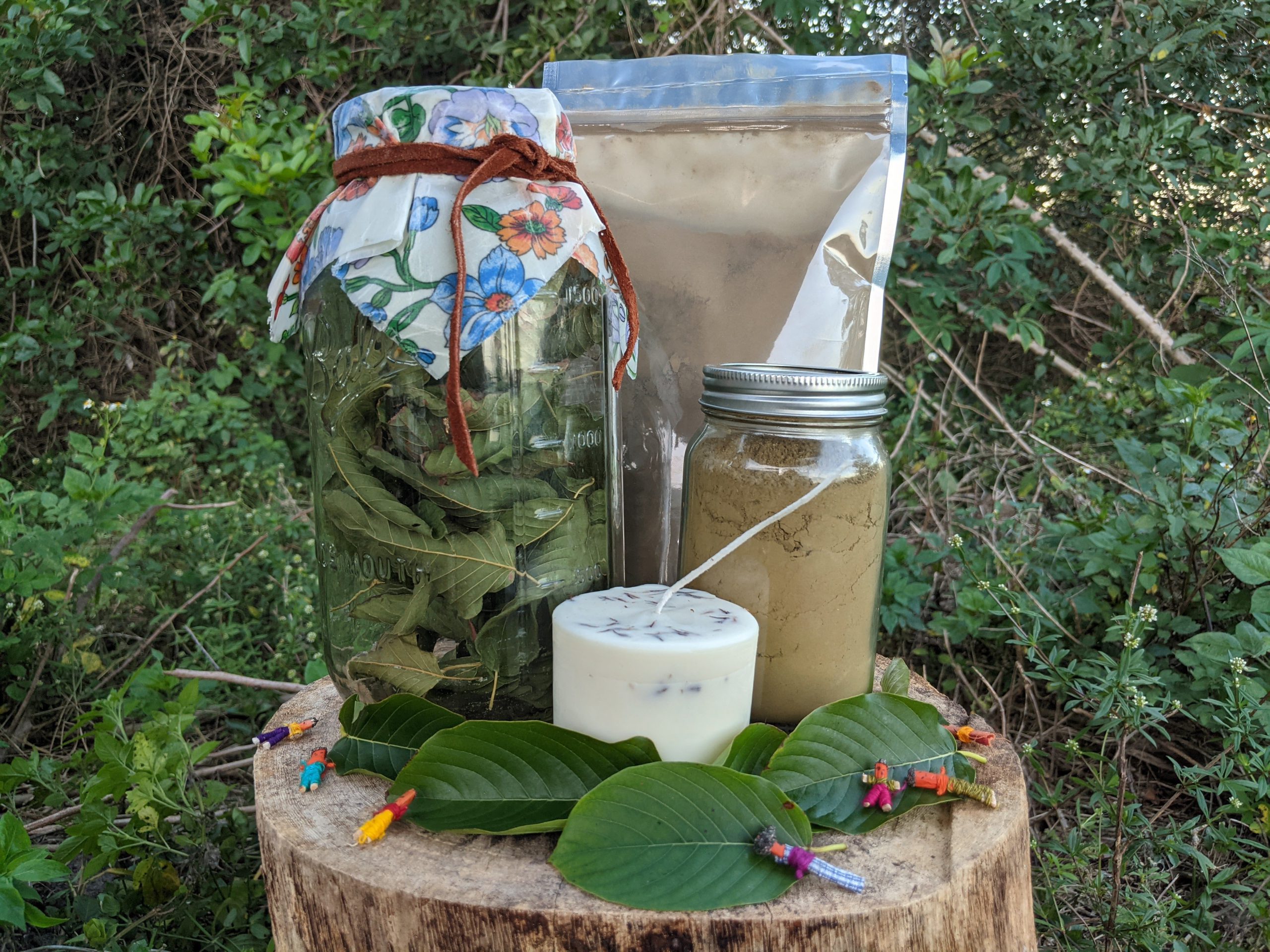


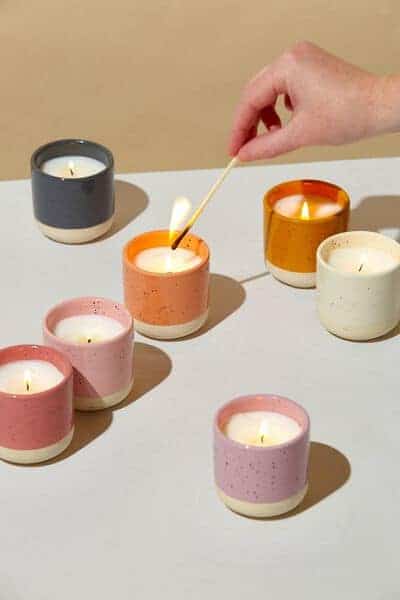
Recent Comments